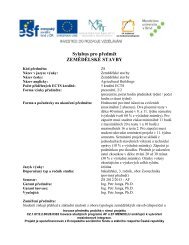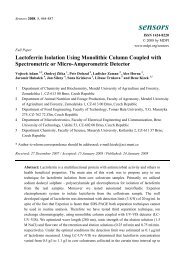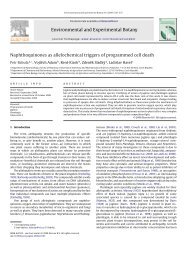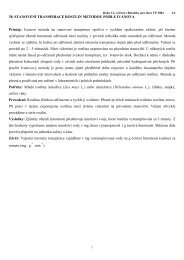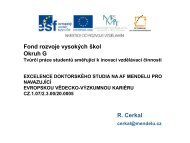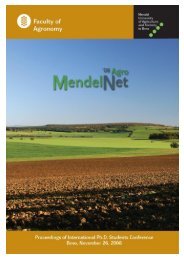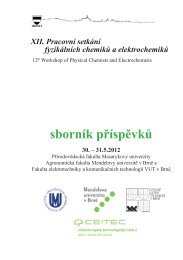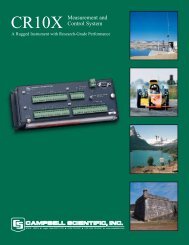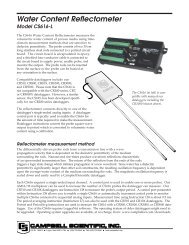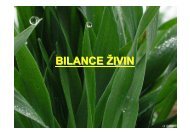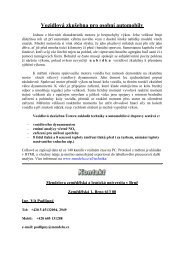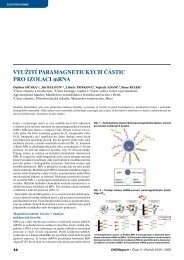ZATLOUKALOVÁ, A. – LOŠÁK, T. – HLUŠEK, J. – PAVLOUŠEK, P. – SEDLÁČEK, M. – FILIPČÍK, R. The effect of soiland foliar applications of magnesium fertilisers on yields and quality of vine (Vitis vinifera, L.) grapes. ActaUniversitatis Agriculturae et Silviculturae Mendelianae Brunensis. 2011. sv. LIX, č. 3, s. 221–226. ISSN1211-8516.A one-year field trial was established with the vine variety Ryzlink vlašský (Riesling italico) to evaluate the effect ofspring soil applications and 5x repeated foliar application of magnesium fertilisers on yields and quality of grapes.On light soil of the experimental locality Žabčice (ca 25 km south of Brno) visual symptoms of Mg deficiencyon vine leaves had been monitored in the past. The experiment involved 4 treatments: 1) unfertilised control; 2)spring soil application of Kieserite – 20 kg Mg.ha-1; 3) 5x foliar application of a 5% solution of Epso Combitop –Mg, S, Mn, Zn; 4) 5x foliar applications of a 5% solution of Epso Top – Mg, S. No significant differences amongthe treatments were detected in the contents of K (1.40-1.67 %) and Ca (1.63-1.91 %) in leaves sampled after theapplications. After foliar application the contents of Mg and S significantly increased in treatments 3-4 to 0.42-0.49% and 0.34-0.40 %, respectively compared to treatments 1-2 (0.29-0.30 % and 0.22 %, respectively). The contentof Zn (173-380 mg.kg-1) and Mn (90-551 mg.kg-1) increased significantly in treatment 3 compared to the othertreatments. The chlorophyll index did not differ among the treatments. Grape yields (t.ha-1) in treatments 1-4 werethe following: 7.04-8.16-7.51-7.26 t.ha-1, respectively. Only the soil-applied treatment 2 differed significantly fromthe other treatments. The content of sugar (16.5-17.9 °NM), titratable acids (12.78-13.25 g.l-1) and the pH of must(3.02-3.11) did not differ among the treatments.WINKLER, J. – ZIMOLKA, J. Ovlivní sněhová pokrývka a mráz zaplevelení?. Úroda. 2011. sv. LIX, č. 2, s. 64–65.ISSN 0139-6013.VyTeplejší zima patrně podporuje v jarním ječmenu především výskyt druhů Galium aparine a Viola arvensis. Vyššípočet dní s mrazem zvyšuje výskyt Stellaria media a Amaranthus sp. Vyšší srážky přispívají k podpoře výskytuChenopodium album a Cirsium arvense. U jednoletých druhů se pravděpodobně jedná o zkrácení doby dormance,uplatnění specifických podmínek počasí a tím jejich následné vyklíčení v jarním období. U vytrvalého druhu Cirsiumarvense dostatek srážek umožňuje lepší přezimování a jeho rychlou regeneraci v jarním období.HOUŠŤ, M. – PROCHÁZKOVÁ, B. – HLEDÍK, P. Effect of different tillage intensity on yields of winter wheat. [CD-ROM]. In Proceedings of 6th Iternational Conference of ISTRO Branch – Czech Republic ”Crop ManagementPractices Adaptable to Soil Conditions and Climate Change”. s. 146–149. ISBN 978-80-86908-27-4.Effect of different tillage intensity on yields of winter wheatEffect of different tillage intensity on yields of winterwheatEffect of different tillage intensity on yields of winter wheatLOŠÁK, T. – ZATLOUKALOVÁ, A. – SZOSTKOVÁ, M. – HLUŠEK, J. – FRYČ, J. – VÍTĚZ, T. Comparison of theeffectiveness of digestate and mineral fertilisers on yields and quality of kohlrabi (Brassica oleracea, L.).Acta Universitatis Agriculturae et Silviculturae Mendelianae Brunensis. 2011. sv. LIX, č. 3, s. 117–122.ISSN 1211-8516.In a one-year vegetation pot experiment we compared the effect of the digestate from a biogas station and mineralfertilisers on yield and quality parameters of kohlrabi, variety Seguza. Four treatments were used in the trial: 1)untreated control, 2) urea, 3) digestate, 4) urea, triple super phosphate, KCl, MgSO4. The rate of N was the same intreatments 2–4, 1.5 g N/pot. In treatment 4 the rate of P, K and Mg corresponded with the rate of these nutrientsin the digestate treatment (3). The weight of single bulbs of the control unfertilised treatment were significantlythe lowest (22.9%), as well as the nitrate (6.0%) and ascorbic acid content (66.2%) compared to the urea treatment(100%) and the other fertilised treatments. After the application of the digestate (treatment 3) and mineral fertilisers(treatment 4) the weight of single bulbs significantly increased by 27.9 and 29.2%, respectively, compared to theurea treatment (2). The content of ascorbic acid in the fertilised treatments did not differ (772–789 mg/kg) but itincreased significantly compared to the unfertilised treatment (511 mg/kg). There were no significant differencesbetween the two treatments fertilised with mineral fertilisers in the bulb nitrate content (678 and 641 mg NO3-/kgfresh matter, respectively). After digestate application their contents decreased significantly to 228 mg NO3-/kgfresh matter. Digestate treatment resulted in comparable or better yield and qualitative parameters compared totreatment with mineral fertilisers.LANG, Š. – KOPP, R. – MAREŠ, J. Vliv použité technologie chovu a hydrochemických parametrů vody na obsahiontů v krvi pstruha duhového (Oncorhynchus mykiss). [CD-ROM]. In MendelNet 2011 – Proceedings ofInternational Ph.D. Students Conference. s. 744–782. ISBN 978-80-7375-563-8.56
Vzhledem k rozšiřujícímu se využití recirkulačních zařízení k chovu ryb a kumulaci některých látek v chovnémprostředí se tato práce zabývá porovnáním vlivu obsahů iontů v chovném prostředí na obsah iontů v krevní pazměryb v recirkulačních a průtočných systémech.KŘEN, J. – NEUDERT, L. – DRYŠLOVÁ, T. – SMUTNÝ, V. Vliv termínu setí a výsevku na strukturu porostu ozimépšenice. [CD-ROM]. In Sborník odborných příspěvků a sdělení ”MendelAgro 2011”. s. 46–49. ISBN 978-80-7375-516-4.Vliv termínu setí a výsevku na strukturu porostu ozimé pšeniceVliv termínu setí a výsevku na strukturu porostuozimé pšeniceVliv termínu setí a výsevku na strukturu porostu ozimé pšeniceVliv termínu setí a výsevku na strukturuporostu ozimé pšeniceZIKOVÁ, A. – KOPP, R. – MAREŠ, J. Změny kvality vody Zámeckého rybníka v závislosti na intenzitě rybářskéhohospodaření. In: BRTNICKÝ, M. – BRTNICKÁ, H. – FOUKALOVÁ, J. – KYNICKÝ, J. Degradace a regeneracekrajiny. 1. vyd. Brno: <strong>Mendelova</strong> <strong>univerzita</strong> v Brně, 2011. s. 324–331. ISBN 978-80-7375-583-6.Zámecký rybník v Lednici na Moravě má statut Národní přírodní rezervace a v rámci ochrany přírody je jeho rybářskéhospodaření výrazně omezeno. Hustota rybí obsádky je klíčovým faktorem ovlivňující kvalitu vody a rozvojostatních společenstev rybníka (fytoplankton, zooplankton). V minulosti měl rybník vysokou obsádku ryb, což seprojevovalo nízkou průhledností, rozkolísáním základních fyzikálně-chemických parametrů a vysokou abundancí sinica řas. Od roku 2004 je rybník bez uměle nasazované rybí obsádky, což vedlo ke změnám chemizmu i druhovéhosložení planktonních společenstev. Naším cílem je zhodnotit, zda uvedené změny vedou k regeneraci dříve intenzivněobhospodařovaného Zámeckého rybníka.FISCHER, M. – TRNKA, M. – KUČERA, J. – FAJMAN, M. – ŽALUD, Z. Biomass productivity and water use relationin short rotation poplar coppice (Populus nigra x p. maximowiczii) in the conditions of Czech MoravianHighlands. Acta Universitatis Agriculturae et Silviculturae Mendelianae Brunensis. 2011. sv. LIX, č. 6,s. 141–152. ISSN 1211-8516.The plantations of short rotation coppice (SRC) usually based on poplar or willow species are promising source ofbiomass for energy use. To contribute to decision-making process where to establish the plantations we evaluatedthe water consumption and its relation to biomass yields of poplar hybrid clone J-105 (Populus nigra x P. maximowiczii)in representative conditions for Czech-Moravian Highlands. Water availability is usually considered as oneof the main constraints of profitable SRC culture and therefore we focused on analyzing of the linkage between theaboveground biomass increments and the total stand actual evapotranspiration (ETa) and on water use efficiencyof production (WUEP). During the seasons 2008 and 2009 the total stand ETa measured by Bowen ratio energybalance system constructed above poplar canopy and the stem diameter increments of randomly chosen sampletrees were examined. The stem diameters were subsequently converted to total aboveground biomass (AB) by allometricequation obtained by destructive analysis at the beginning of 2010. The biomass volume and its incrementof particular trees were subsequently converted to the whole canopy growth and correlated with the ETa values.Our results revealed that there was a statistically significant relation between water lost and biomass growth withcoefficients of determination r2 0.96 and 0.51 in 2008 and 2009 respectively. By using multiple linear regressionanalysis additionally accounting for effect of precipitation events and thermal time (sums of effective temperaturesabove +5 °C) the AB growth was explained from 98 and 87% in 2008 and 2009, respectively. Therefore for furtheranalysis the multiple linear regression model was applied. The dynamic of seasonal WUEP (expressed as gram ofAB dry matter per thousand grams of water) reached up to 6.2 and 6.8 g kg–1 with means 3.13 and 3.54 g kg–1in both executed years respectively. These values are situated in higher range comparing to the other broadleavedtree species of temperate climate zone and suggest that economically profitable plantation (defined by yield at leastin the range of 10–12 Mg ha–1 year–1 of dry matter content) will consume more than 450–500 mm per growingseason and thus will demand a locality with higher and adequately temporally distributed amount of precipitationespecially in rain fed areas such as the discussed Czech-Moravian Highlands.BARTOŠOVÁ, L. – TRNKA, M. – BAUER, Z. – ŠTĚPÁNEK, P. – MOŽNÝ, M. – ŽALUD, Z. Phenological response ofthree bird populations from Czech Republic to changing climate during 1961-2008. [disk]. In EGU2011 –Geophysical Research Abstracts. s. 7974.In this work we present different phenological response of three bird populations: Nuthatch (Sitta europaea), GreatTit (Parus major) and Collared Flycatcher (Ficedula albicolis). Phenophases of these three passerine bird populationscreate gradual phenological sequence covering most of the spring period in the south eastern part of the Czech57
- Page 1:
Mendelova univerzita v BrněPublika
- Page 5 and 6: Selenium (Se) is an important eleme
- Page 7 and 8: infiltrace byl prováděn odběr ne
- Page 9 and 10: STŘEDA, T. - DOSTÁL, V. - HAJZLER
- Page 11 and 12: a Vlk & Černý (2001). Polyfágní
- Page 13 and 14: JANEČKA, L. - ELZNER, P. - JŮZL,
- Page 15 and 16: Mendelovy univerzity v Brně. K pok
- Page 17 and 18: as follows: a) three cuts/180 kg N+
- Page 19 and 20: 1. vyd. USA: Edward Elgar Publishin
- Page 21 and 22: on the quality of some small berrie
- Page 23 and 24: BARTOŠOVÁ, L. - TRNKA, M. - BALEK
- Page 25 and 26: number of protozoa in the rumen of
- Page 27 and 28: were compared with simple floristic
- Page 29 and 30: ORSÁG, M. - FISCHER, M. - TRNKA, M
- Page 31 and 32: trav bez vegetačního krytu na jih
- Page 33 and 34: Metodika je zaměřena na vyhodnoce
- Page 35 and 36: a délky kvetení s přihlédnutím
- Page 37 and 38: výnosových parametrů ozimé řep
- Page 39 and 40: DVOŘÁK, J. - SMUTNÝ, V. Vlivy os
- Page 41 and 42: Předmětem výzkumu bylo posoudit
- Page 43 and 44: many different oily crops used for
- Page 45 and 46: steppe dominated by Stipa tenacissi
- Page 47 and 48: MENDELOVA UNIVERZITA V BRNĚ. Sada
- Page 49 and 50: její rozdělení, příčiny, nás
- Page 51 and 52: v růstu ryb mezi jednotlivými ná
- Page 53 and 54: MENDELOVA UNIVERZITA V BRNĚ. Odbě
- Page 55: and had fewer isolated occurrences
- Page 59 and 60: M. - EITZINGER, J. - MÁLEK, J. - F
- Page 61 and 62: level of 25 mg/kg (S0) to 35 mg/kg
- Page 63 and 64: Technologists. Book of Abstracts. 1
- Page 65 and 66: Cílem našeho experimentu bylo pro
- Page 67: Publikační činnostProjekt: Biolo



